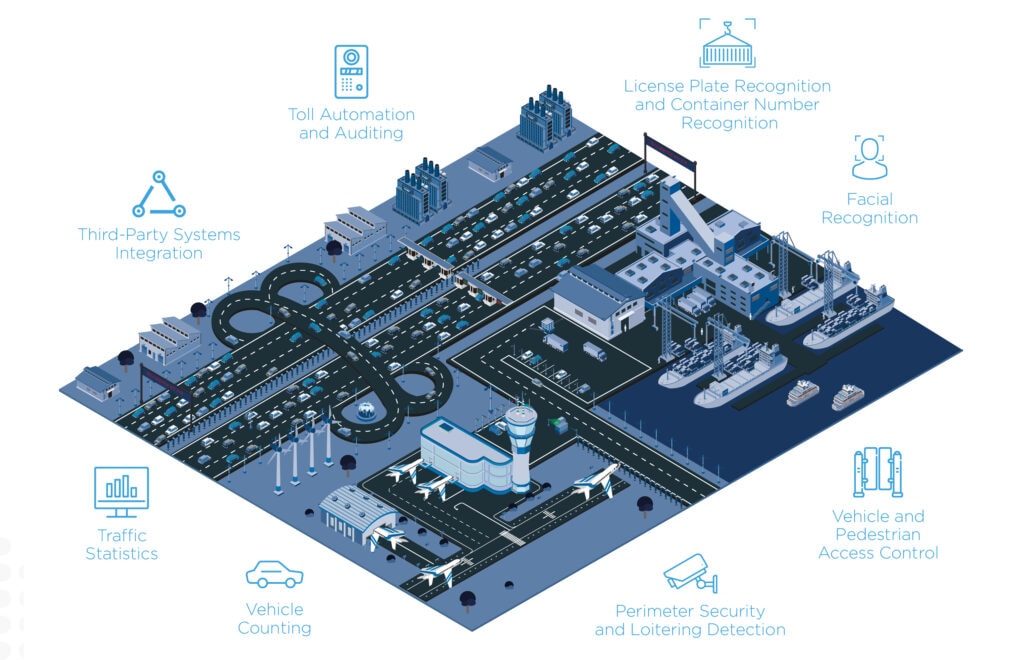March Robotics solutions address the diverse difficulties of transportation security, from transportation centers for example rail stations and air terminals to coordinated operations offices, to smart streets. The video management platform must be adaptable and simple to configure to meet the requirements of a wide range of security issues due to the numerous and distinct requirements of each deployment. Meeting the requirements of transportation security personnel is becoming increasingly dependent on video analytics.
Intelligent Traffic Monitoring, Face Recognition, Unidentified Object Detection, Object Tracking, Cargo and Train Carriage Recognition and are just a few of the video analytics solutions that can be used to address emerging threats in this essential part of the national infrastructure.

An intelligent transportation system is modular and can feature any number of the following:
- •Traffic signal controls
- •Freeway management systems
- •Traffic management systems
- •Transit management systems
- •Traveler information services
- •Road incident management systems
- •Emergency management services
- •Electronic fare payment systems
- •Advanced traffic analytics
- •Public transport management systems
- •Road network performance monitoring
- •Connected car infrastructure
- •Railroad grade crossing safety systems
- •Commercial vehicle operations systems
Intelligent transportation systems can be implemented to work with a single means for transportation for example vehicle traffic, rail route frameworks or multi-particular excursions, complex traveler transportation infrastructure.. An intelligent transportation systems intended outcomes improvement of transportation infrastructure safety, dependability, efficiency, and quality remain constant.
Intelligent transport system technical equipment :
- •Connected CCTV cameras
- •Public transport telematics
- •Traffic management systems
- •Connected cars data
- •Floating cellular data
- •Floating car data
- •In-vehicle driver consoles
- •Public weather data
- •Toll payment devices
- •Public transport management systems
- •Road infrastructure controllers
- •Geographic information systems (GIS)
- •Government-backed data access and exchange programs
All of these features can be accessed either directly from the source or through private and public APIs provided by companies which make intelligent transportation systems. A technical procedure for operationalizing the incoming intelligence must be developed after the necessary data sources and integrations have been identified.